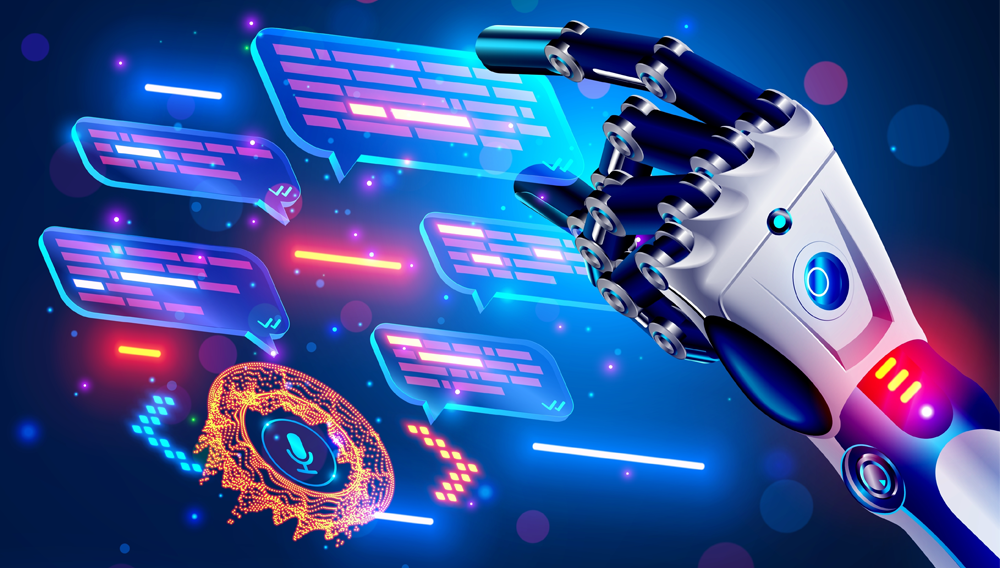4 min read
Introducing Connext AI: An Entirely New Way to Develop Smart Physical Systems
 Stan Schneider
:
May 6, 2025
Stan Schneider
:
May 6, 2025

I’ve been waiting a long time. And now it’s here. This week.
You see, my company RTI just released Connext AI. It’s really hard to describe how much it will change our world, our customers’ world, and because of what we do…your world, too.
When I was working on my PhD at Stanford, I was excited that we had the “latest” processors from Sun and Intel. They ran a million floating operations per second (1 MegaFLOP); performance that allowed my robot to throw and catch objects with real-time vision processing. But a MegaFLOP seems quaint now. At the recent NVIDIA GTC conference, the writing was literally on the (giant-display-screen) wall…NVIDIA arrays could achieve 1.4 PetaFLOPs. A PetaFLOP? That used to mean what my dog did after a long run. Now it means processors are a billion times faster than my Stanford robot’s “brain.”
Of course, this isn’t really a surprise. Like all of you, I did the math. Moore’s law was prophetic: processor capability was the future, and the future was all about AI. I’ve presented the exponential curves many times ever since, using them to explain: “The future is coming! The future is coming!” I said it so many times that it became ordinary, but it was always in a galaxy far, far away. Well, this week marks the future for me. This week is not ordinary.
Let’s back up a bit and explain RTI. Our tagline is “RTI Runs a Smarter World.” That’s been our mission since day one. From defense, to medicine, to automobiles, to trains, to flying cars, RTI software is the nervous system that connects “intelligence” to the sensors and actuators that run the real world. Of course, for most of our journey, I had to say the intelligence was “functional AI.” That’s because embedded systems didn’t use “real” AI trained with back propagation or neural networks, but the systems built with our technology were always smarter than before. That’s changing too. Increasingly, the brains are “real” AI, as our growing partnership with NVIDIA exemplifies. AI enablement marches on in every direction; the road to autonomy is bumpy but inexorable.
But that’s not what’s new this week.
This week, RTI is introducing our own AI, Connext AI. Or more accurately, we are integrating Connext AI into our toolchains. This is no small change for two reasons: a) Connext AI is truly unique, and b) integrating it into our tools fundamentally changes the difficulty in building smart systems.
Let’s start with why Connext AI is unique. RTI’s Connext product line is a highly-capable infrastructure for smart systems. Our product today runs thousands of applications. Their total value is about $1 trillion. But it’s also complex. To help users navigate that complexity, we have thousands of pages of documentation, dozens of training courses, megabytes and megabytes of community source examples, thousands of example data types, and on and on. We offer free onboarding training and expert help. But getting started, reading up on examples, patterns, and data models, understanding configuration, figuring out which of the many features to use, and getting a prototype shell running…well…it took some study and work.
That was last week.
This week, we have Connext AI, a special AI that leverages and delivers all our experience. We fed our thousands of pages of documentation, all our training courses, examples, data models, and our experience with $1 trillion worth of real stuff into an AI. Then we spent years tuning Connext AI to make almost no mistakes, to validate code, and to give truly useful results. Now, our users can use it to immediately start working on complex intelligent systems.
Connext AI is very different from ChatGPT, CoPilot, or other generic AI assistants. They can code, but they’re not experts on real-time physical systems like Connext AI. Our AI is a custom-trained expert teacher, configurator, co-designer, and coder. It’s really a very different experience.
Integrating it into the tools is also new. Let me give you an example. Suppose you are building an intelligent car. You can draw a diagram of your system, like this:
On the left, a simple diagram of a smart car, showing typical sensors, intelligent algorithms, and their connections. On the right, a section of the automatically-generated system description of the data types required to implement the design.
Connext AI can read that whiteboard image and generate a full-system distributed dataflow framework. (!) It knows 3,000 data types, including typical automotive radar data types with range, azimuth, elevation, and doppler information. It can build that automatically into an executable program that exchanges these types.
If you provide more details, it gets more impressive. For instance, if you give a sensor part number, it can find the information on that part online and develop data interfaces for that particular part. It will generate full system dataflow descriptions, validated and executable enough to be prototype shell code.
Then, you can put these descriptions into our System Designer tool and it will help you design data flows. You can specify timing parameters and reliability, for instance. During development and debugging, you can ask the AI questions about tradeoffs, point it at error messages and ask why they may have happened, or click on anything and ask for a simple explanation. It’s an intelligent assistant that’s always there for you.
It's stunning to imagine how much this will change how our customers work. As a user, now you can model, develop, debug, and deploy intelligent systems with 24x7 AI assistance. It slashes learning time, explains everything you need without the details you don’t need, recommends features, automatically configures flows, and generates validated code while avoiding hallucinations. Connext AI isn’t just another feature; it’s an entirely new way to develop smart physical systems.
Connext AI can help you accomplish in seconds what it would take you months to do on your own.
This also changes the very nature of what RTI is. RTI software has always been an intelligent system enablement technology, even when that intelligence was “just functional” AI. Now with Connext AI, our development platform is also AI-enabled. So it sounds strange, but we are an AI-enabled, AI enablement company. And we are, of course, still the real-world physical system experts, by far the largest and most experienced company in our space. You can rely on RTI…and now it’s much easier to do that.
With Connext AI, we can help the world get smarter much faster. A smart world is a better world, with better healthcare, safer transportation, more efficient defense, and greener power. Using AI itself to accelerate the use of AI is what’s new this week. This is the start of a great new future.
It’s been worth the wait.
About the author:
 Stan Schneider is CEO of Real-Time Innovations (RTI), the largest software framework provider for smart machine and real-world systems.
Stan Schneider is CEO of Real-Time Innovations (RTI), the largest software framework provider for smart machine and real-world systems.
Stan also serves on the advisory board for IoT Solutions World Congress and the boards of the Teleoperations Consortium and the Autonomous Vehicle Computing Consortium (AVCC). Stan holds a PhD in EE/CS from Stanford University.
Posts by Tag
- Developers/Engineer (180)
- Technology (79)
- Connext Suite (77)
- News & Events (75)
- 2020 (54)
- Aerospace & Defense (52)
- Standards & Consortia (51)
- Automotive (38)
- 2023 (34)
- 2022 (29)
- IIoT (27)
- 2025 (25)
- Leadership (24)
- Healthcare (23)
- 2024 (22)
- Connectivity Technology (21)
- Cybersecurity (20)
- 2021 (18)
- Culture & Careers (15)
- Military Avionics (15)
- FACE (13)
- Connext Pro (10)
- JADC2 (10)
- ROS 2 (10)
- Connext Tools (7)
- Connext Micro (6)
- Databus (6)
- Transportation (5)
- Case + Code (4)
- Connext (4)
- Connext Cert (4)
- Energy Systems (4)
- FACE Technical Standard (4)
- AI (3)
- Oil & Gas (3)
- Research (3)
- Robotics (3)
- #A&D (2)
- Connext Conference (2)
- Edge Computing (2)
- Golden Dome (2)
- MDO (2)
- MS&T (2)
- RTI Labs (2)
- TSN (2)
- ABMS (1)
- C4ISR (1)
- DOD (1)
- ISO 26262 (1)
- L3Harris (1)
- LabView (1)
- MOSA (1)
- MathWorks (1)
- National Instruments (1)
- Simulation (1)
- Tech Talks (1)
- UAM (1)
- Videos (1)
- eVTOL (1)
 Success-Plan Services
Success-Plan Services